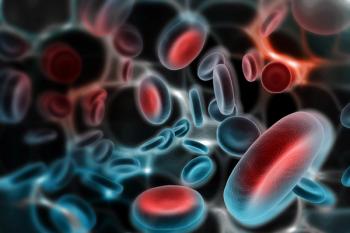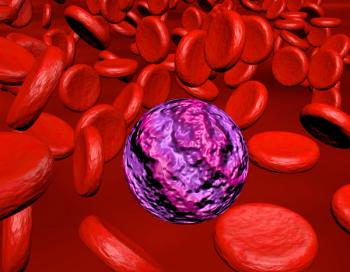
- Oncology Vol 29 No 4
- Volume 29
- Issue 4
Small Molecules, Big Challenges
With each passing year, chemotherapy is less and less a focus of interest. Instead, the focus is on the abundance of exciting new biologic and targeted agents that are bulldozing the therapeutic landscape in the lymphomas and chronic lymphocytic leukemia.
Recently, my medical students requested a lecture on the topic of “chemotherapy in hematologic malignancies.” I explained that I was unable to comply because the subject was archaic: with each passing year, chemotherapy is less and less a focus of interest. Instead, the focus is on the abundance of exciting new biologic and targeted agents that are bulldozing the therapeutic landscape in the lymphomas and chronic lymphocytic leukemia, with many of these new agents in oral form and most well-tolerated. In this issue of ONCOLOGY, Drs. Siddiqi and Rosen provide a glimpse of where we are with a number of these new agents in the management of chronic lymphocytic leukemia and non-Hodgkin lymphoma.
While these drugs are truly revolutionary, major issues remain in their development. In the vast majority of patients, the best they achieve when administered as single agents are partial remissions, albeit durable. Cure is still elusive. Are partial responses really adequate? Should we treat these histologies as chronic diseases, or go for cure? The only way to achieve the goal of cure will be with the continued development of rational combinations. More than a decade ago, investigators from Cancer and Leukemia Group B (CALGB) started a program of biologic doublets in an attempt to eliminate traditional chemotherapeutic agents from the management of patients with follicular lymphoma. At the time, all we had were rituximab and a few monoclonal antibodies that are no longer in development.[1,2] Nonetheless, responses were achieved in 85% to 90% of patients, many of which were durable.
At recent meetings we have been dazzled by discussions of agents that target the cell surface (eg, monoclonal antibodies), the intracellular pathways (eg, Bruton’s tyrosine kinase [BTK], phosphoinositide 3-kinase [PI3K], and Bcl2), and the microenvironment (immunomodulatory drugs such as lenalidomide), as well as the checkpoint inhibitors that target the programmed death 1 (PD-1)/programmed death ligand 1 (PD-L1) axis, which is basically Ambien for cytotoxic cells. Drugs that disrupt this axis (although not discussed in this article) have shown exciting activity in Hodgkin lymphoma[3] and non-Hodgkin lymphoma.[4]
There are numerous ongoing clinical trials combining targeted agents with chemoimmunotherapy regimens-for example, with bendamustine and rituximab, or in aggressive lymphomas, with R-CHOP (rituximab, cyclophosphamide, doxorubicin, vincristine, and prednisone). Such studies are, hopefully, a temporary diversion from the Holy Grail of chemotherapy-free treatment. What is needed are intelligent combinations of these and even newer agents. Encouraging data have been published regarding the so-called R2 regimen (rituximab, lenalidomide), which was first tested in relapsed follicular lymphoma and, more recently, as the initial treatment for follicular, low-grade, and mantle cell lymphomas, achieving response rates in excess of 90%, with complete and durable responses in more than 70%.[5,6] Based on these data, this regimen was tested in a head-to-head comparison with traditional chemoimmunotherapy, the results of which have the potential to totally revolutionize our approach to these diseases. Similarly promising data have also been reported with this regimen in untreated patients with mantle cell lymphoma.[7]
Various BTK and PI3K inhibitors are being included in numerous combinations and permutations with rituximab, lenalidomide, and other agents, with apparently improved results compared with those of single-agent therapy. Alliance is currently completing a phase I trial of R2 plus ibrutinib in untreated follicular lymphoma. However, combinations must be developed with caution, as they are not all without their hazards. Studies of R2 plus idelalisib in relapsed follicular lymphoma and mantle cell lymphoma patients, as well as a study of the combination of the spleen tyrosine kinase (Syk) inhibitor GS-9973 with idelalisib, were terminated early because of unexpected, prohibitive toxicities.[8]
The seemingly endless parade of new agents presents a number of challenges for the development of doublets and triplets. First, to help select the optimal regimen for patients, as well as the drugs least likely to be of benefit, we need to identify reliable biomarkers.
Given the impressive complete and overall response rates seen with some of the new regimens, novel clinical trial designs will have to be implemented so that issues can be addressed within our lifetime. Also, as promising results appear with second- and third-generation agents, such as those targeting BTK (eg, ACP-196) or PI3K (eg, IPI-145 and GS-9901), the challenge will be how to design trials that will achieve regulatory approval.
Thus, surrogate markers need to be incorporated into the design and implementation of future studies. For example, a recent pooled analysis of three large studies published by Trotman et al[9] demonstrated that post-treatment positron emission tomography (PET)/CT scans predicted not only progression-free survival but also overall survival in follicular lymphoma patients. A number of groups have shown that various assays of minimal residual disease can predict outcome in lymphoid malignancies.[10,11]
A final challenge is not scientific but financial. Even as single agents, these drugs are exceptionally expensive and, as currently used, many require indefinite administration-for as long as tolerability, response, and resources permit. Although combination strategies will be initially more expensive, they may allow for earlier discontinuation of treatment, making them more cost-effective. More importantly, they may lead to cure for these patients.
Financial Disclosure:Dr. Cheson consults for Celgene, Gilead, Pharmacyclics, and Roche-Genentech; his institution receives research funding from Acerta, Celgene, Gilead, Pharmacyclics, and Roche-Genentech.
References:
1. Czuczman MS, Leonard JP, Jung S, et al. Phase II trial of galiximab (anti-CD80 monoclonal antibody) plus rituximab (CALGB 50402): Follicular Lymphoma International Prognostic Index (FLIPI) score is predictive of upfront immunotherapy responsiveness. Ann Oncol. 2012;23:2356-62.
2. Grant BW, Jung SH, Johnson JL, et al. A phase 2 trial of extended induction epratuzumab and rituximab for previously untreated follicular lymphoma: CALGB 50701. Cancer. 2013;119:3797-804.
3. Ansell SM, Lesokhin AM, Borrello I, et al. PD-1 blockade with nivolumab in relapsed or refractory Hodgkin’s lymphoma. N Engl J Med. 2015;372:311-9.
4. Westin JR, Chu F, Zhang M, et al. Safety and activity of PD1 blockade by pidilizumab in combination with rituximab in patients with relapsed follicular lymphoma: a single group, open-label, phase 2 trial. Lancet Oncol. 2014;15:69-77.
5. Martin P, Jung S-H, Johnson JL, et al. CALGB 50803 (Alliance): A phase II trial of lenalidomide plus rituximab in patients with previously untreated follicular lymphoma. J Clin Oncol. 2014;32(suppl 5s):abstr 8521.
6. Fowler NH, Davis RE, Rawal S, et al. Safety and activity of lenalidomide and rituximab in untreated indolent lymphoma: an open-label, phase 2 trial. Lancet Oncol. 2014;15:1311-8.
7. Ruan J, Martin P, Shah BD, et al. Sustained remission with the combination biologic doublet of lenalidomide plus rituximab as initial treatment for mantle cell lymphoma: a multi-center phase II study report. Blood. 2014;124:abstr 625.
8. Smith SM, Pitcher B, Jung S-H, et al. Unexpected and serious toxicity observed with combined idelalisib, lenalidomide and rituximab in relapsed/refractory B cell lymphomas: Alliance A051201 and A051202. Blood. 2014;124:abstr 3091.
9. Trotman J, Luminari S, Boussetta S, et al. Prognostic value of PET-CT after first-line therapy in patients with follicular lymphoma: a pooled analysis of central scan review in three multicentre studies. Lancet Haematol. 2014;1:e17-27.
10. Logan AC, Zhang B, Narasimhan B, et al. Minimal residual disease quantification using consensus primers and high-throughput IGH sequencing predicts post-transplant relapse in chronic lymphocytic leukemia. Leukemia. 2013;27:1659-65.
11. Galimberti S, Luminari S, Ciabatti E, et al. Minimal residual disease after conventional treatment significantly impacts on progression-free survival of patients with follicular lymphoma: the FIL FOLL05 trial. Clin Cancer Res. 2014;20:6398-405.
Articles in this issue
over 10 years ago
Caring for the Life You Savedover 10 years ago
Current and Emerging Treatments for Brain Metastasesover 10 years ago
Brain Metastases: The Changing Landscapeover 10 years ago
Managing Thrombocytopenia Associated With Cancer ChemotherapyNewsletter
Stay up to date on recent advances in the multidisciplinary approach to cancer.


















































































